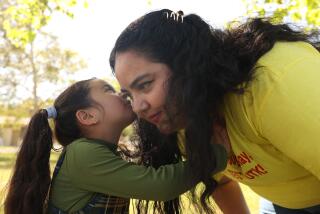Teaching Students How to Think
- Share via
* What a splendid essay on testing in the schools (Opinion, Dec. 31). For many years I have thought both the teaching system of our schools and the methods of evaluation (testing) were unproductive and uncreative.
As Howard Gardner suggests, teaching children how to think, relative to various disciplines and subjects, rather than stuffing them full of facts and figures (mere memorization) has, to my mind, far more value at any socioeconomic stratum. The mind is not merely a vessel to be filled. It’s a human phenomenon to be flexed and inspired. Ultimately, creative thinking leads to motivation, formation of viable values and enriched life for both individuals and the society.
Imagination, intuition and reason can be encouraged in our schools, leading, in my opinion, toward a far more “educated” person than testing for information and facts (available in any library or on the Internet).
PEGGY AYLSWORTH LEVINE
Santa Monica
*
I was impressed by Gardner’s diatribe against educational testing. He seems to have forgotten the No. 1 rule of management: If you can’t measure it, you can’t manage it. I have worked in the California State University system for over a quarter of a century, and I wish Gardner had been with me all the times that students from the top 12.5% of California’s “untested” high schools reached junior standing in the CSU system and were unable to add three two-digit numbers without a calculator. And Gardner thinks it is a “perceived problem.” Damn right it is. And one that brings tears to your eyes!
But he got one thing right. There have to be multiple tests. Gardner and the other education theorists finally seem to understand that they can’t measure “education” with a single test. It is about time the theorists sat down and let the people in the trenches develop the tests. We know how to measure what has been learned and what hasn’t. We do it every day.
JAMES W. TAYLOR
Laguna Beach






